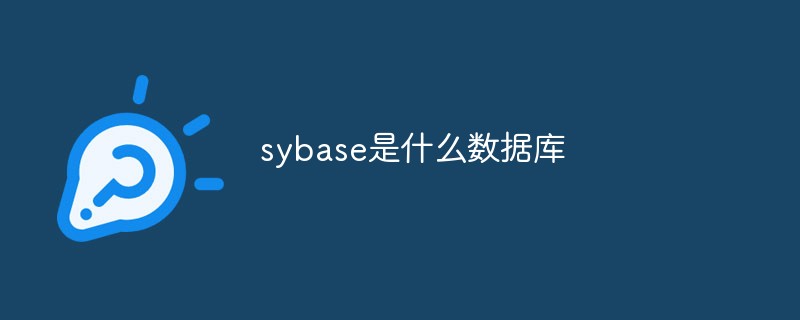The content of this article is about Yii 11.17 database related operation instructions, which has certain reference value. Now I share it with you. Friends in need can refer to it
Example:
$result = array(
'id'=>null,
'val'=>0
);
$row1 = Yii::app()->db->createCommand()->insert('test1', $result);
$id = Yii::app()->db->getLastInsertID();
$row2 = Yii::app()->db->createCommand()->update('test1', array('val'=>$id) , 'id=:id',array(':id'=>$id));
echo $id;
exit;#1. To establish a database connection, you can use try...catch to catch exceptions that may be thrown
#$connection=new CDbConnection($dsn,$username,$password);
# DSN format
# SQLite: sqlite:/path/to/dbfile
# MySQL: mysql:host=localhost;dbname=testdb
# PostgreSQL: pgsql:host=localhost;port=5432;dbname=testdb
# SQL Server: mssql:host=localhost;dbname=testdb
# Oracle: oci:dbname=//localhost:1521/testdb
#Modify the alias in the configuration file
array(
'components'=>array(
'db'=>array(
'class'=>'CDbConnection',
'connectionString'=>'mysql:host=localhost;dbname=testdb',
'username'=>'root',
'password'=>'password',
'emulatePrepare'=>true, // needed by some MySQL installations
),
),
) # Then use this method to establish a connection, and we can access the database connection through
$connection = Yii::app()->db
#. It is automatically activated unless we specifically configure
# CDbConnection::autoConnect to false.
# In this way, this single DB connection can be shared in many places in our code.
# If not, you may need to explicitly establish a connection:
# $connection=new CDbConnection($dsn,$username,$password);
$connection->active=true; # 建立链接之后active为true;
$connection->active=false; # 关闭连接
#Run SQL
$command=$connection->createCommand($sql);
#SQL modification
$command->text = $newSQL;
execute() method is used to execute INSERT, UPDATE and DELETE.
If successful, it will return the number of rows affected by this execution.
#query() method executes a SQL statement that returns several rows of data, such as SELECT. #If successful, it returns a CDbDataReader instance through which the resulting rows of data can be traversed. #For the sake of simplicity, (Yii) also implements a series of queryXXX() methods to directly return query results
#If an error occurs in SQL, an exception will be thrown. .
$rowCount = $command->execute(); # 执行无查询 SQL $dataReader = $command->query(); # 执行一个 SQL 查询 $rows = $command->queryAll(); # 查询并返回结果中的所有行 $row = $command->queryRow(); # 查询并返回结果中的第一行 $column = $command->queryColumn(); # 查询并返回结果中的第一列 $value = $command->queryScalar(); # 查询并返回结果中第一行的第一个字段
Get query results
#After generating CDbDataReader
#Repeatedly call CDbDataReader::read()
#For example
#
$dataReader = $command->query();
#Method 1 Repeatedly call read() until it returns false
while
( ($row = $dataReader->read()) !== false) { ... }
foreach
#Method 3 Extract all rows into an array at once$rows = $dataReader->readAll();#Note:
#All queryXXX() methods will return data directly
#query() will not, but will return an instance of CDbDataReader
#Use transactions
$transaction= $connection->beginTransaction();
try
{
$connection->createCommand($sql1)->execute();
$connection->createCommand($sql2)->execute();
#其他
$transaction->commit();
}
catch(Exception $e) # 如果有一条查询失败,则会抛出异常
{
$transaction->rollBack(); #回滚
}$sql="INSERT INTO tbl_user (username, email) VALUES(:username,:email)"; $command = $connection->createCommand($sql);####Replace the placeholder "with the actual username": username"######
$command->bindParam(":username", $username, PDO::PARAM_STR);####Replace the placeholder ":email" with the actual Email"######$command->bindParam(":email",$email,PDO::PARAM_STR);
$command->execute();####When executing the same logic repeatedly####Use the new one Parameter set inserts into another row######$command->bindParam(":username",$username2,PDO::PARAM_STR);
$command->bindParam(":email",$email2,PDO::PARAM_STR);
$command->execute();####bindParam() and bindValue() are very similar. ####The only difference is that the former uses a PHP variable to bind parameters, ####and the latter uses a value. For those parameters with large data blocks in memory, for performance reasons, the former should be used first. ################################################ ##############Bind columns######$sql="SELECT username, email FROM tbl_user"; $dataReader=$connection->createCommand($sql)->query();####Use the $username variable to bind the first column (username)######
$dataReader->bindColumn(1,$username);### #Use the $email variable to bind the second column (email)######
$dataReader->bindColumn(2,$email);######while###($dataReader->read()!==false)###{## # #$username and $email contain the username and email in the current line### #There is no need to assign values to two variables every time###}############### #################################################use Table prefix####Configure the CDbConnection::tablePrefix property to the desired table prefix. ######
array(
'components'=>array(
'db'=>array(
'class'=>'CDbConnection',
'connectionString'=>'mysql:host=localhost;dbname=testdb',
'username'=>'root',
'password'=>'password',
'emulatePrepare'=>true, // needed by some MySQL installations
'tablePrefix'=>"表前缀_"
),
),
)$sql='SELECT * FROM {{user}}';
$users=$connection->createCommand($sql)->queryAll();#############################$user = Yii::app()->db->createCommand()
->select('username, password')
->from('tbl_user')
->where('id=:id', array(':id'=>1))
->queryRow();###where() method (available since v1 .1.6) ###public CDbCommand where(mixed $conditions, array $params=array())###$conditions mixed conditions placed in the WHERE part. ###$params array use with . ###This method requires a $conditions parameter and a $params parameter, specifying the value to be bound to the query. ###############$conditions parameter can be a string (such as 'id=1') or an array.
If it is the latter, it must be in the format array(operator, operand1, operand2, ...), the operator can be one of the following, and the possible operands depend on the corresponding operator:
and: The operands should be connected using AND.
For example:
array('and', 'id=1', 'id=2')
will generate
'id=1 AND id=2'. If an operand is an array, it is converted to a string using the same rules described here. For example:
array('and', 'type=1', array('or', 'id=1', 'id=2'))
will generate
'type=1 AND ( id=1 OR id=2)'
This method will not do any quoting or escaping.
or: Similar to the and operator, except that the operands are connected using OR.
in: Operand 1 should be a column or DB expression, operand 2 should be an array, indicating the range in which the value of the corresponding column or DB expression should be.
For example:
array('in', 'id', array(1,2,3))
will generate 'id IN (1,2,3)'
This method will be correct The quoted column name and the escaped value in the range.
not in: Similar to in, except IN is replaced with NOT IN when generating conditions.
like: Operand 1 should be a column or a DB expression, operand 2 is a string or an array indicating the value of the column or DB expression that should be like.
For example:
array('like', 'name', '%tester%')
will generate
"name LIKE '%tester%'"
When the value range is given As an array, multiple LIKE predicates will be generated and connected using AND.
For example:
array('like', 'name', array('%test%', '%sample%'))
will generate
"name LIKE '%test%' AND name LIKE '%sample%'"
This method will correctly quote escaped values in column names and ranges.
not like: Similar to like, except that NOT LIKE is used instead of LIKE when generating conditions.
or like: Similar to like, except OR is used to connect LIKE predicates.
or not like: Similar to not like, except OR is used to connect NOT LIKE predicates.
Related recommendations:
Yii multi-application multi-module
Yii2 configuration basic concepts
The above is the detailed content of Yii 11.17 database related operation instructions. For more information, please follow other related articles on the PHP Chinese website!
 深入理解MySQL索引优化器工作原理Nov 09, 2022 pm 02:05 PM
深入理解MySQL索引优化器工作原理Nov 09, 2022 pm 02:05 PM本篇文章给大家带来了关于mysql的相关知识,其中主要介绍了关于索引优化器工作原理的相关内容,其中包括了MySQL Server的组成,MySQL优化器选择索引额原理以及SQL成本分析,最后通过 select 查询总结整个查询过程,下面一起来看一下,希望对大家有帮助。
 sybase是什么数据库Sep 22, 2021 am 11:39 AM
sybase是什么数据库Sep 22, 2021 am 11:39 AMsybase是基于客户/服务器体系结构的数据库,是一个开放的、高性能的、可编程的数据库,可使用事件驱动的触发器、多线索化等来提高性能。
 visual foxpro数据库文件是什么Jul 23, 2021 pm 04:53 PM
visual foxpro数据库文件是什么Jul 23, 2021 pm 04:53 PMvisual foxpro数据库文件是管理数据库对象的系统文件。在VFP中,用户数据是存放在“.DBF”表文件中;VFP的数据库文件(“.DBC”)中不存放用户数据,它只起将属于某一数据库的 数据库表与视图、连接、存储过程等关联起来的作用。
 数据库系统的构成包括哪些Jul 15, 2022 am 11:58 AM
数据库系统的构成包括哪些Jul 15, 2022 am 11:58 AM数据库系统由4个部分构成:1、数据库,是指长期存储在计算机内的,有组织,可共享的数据的集合;2、硬件,是指构成计算机系统的各种物理设备,包括存储所需的外部设备;3、软件,包括操作系统、数据库管理系统及应用程序;4、人员,包括系统分析员和数据库设计人员、应用程序员(负责编写使用数据库的应用程序)、最终用户(利用接口或查询语言访问数据库)、数据库管理员(负责数据库的总体信息控制)。
 microsoft sql server是什么软件Feb 28, 2023 pm 03:00 PM
microsoft sql server是什么软件Feb 28, 2023 pm 03:00 PMmicrosoft sql server是Microsoft公司推出的关系型数据库管理系统,是一个全面的数据库平台,使用集成的商业智能(BI)工具提供了企业级的数据管理,具有使用方便可伸缩性好与相关软件集成程度高等优点。SQL Server数据库引擎为关系型数据和结构化数据提供了更安全可靠的存储功能,使用户可以构建和管理用于业务的高可用和高性能的数据应用程序。
 数据库的什么是指数据的正确性和相容性Jul 04, 2022 pm 04:59 PM
数据库的什么是指数据的正确性和相容性Jul 04, 2022 pm 04:59 PM数据库的“完整性”是指数据的正确性和相容性。完整性是指数据库中数据在逻辑上的一致性、正确性、有效性和相容性。完整性对于数据库系统的重要性:1、数据库完整性约束能够防止合法用户使用数据库时向数据库中添加不合语义的数据;2、合理的数据库完整性设计,能够同时兼顾数据库的完整性和系统的效能;3、完善的数据库完整性有助于尽早发现应用软件的错误。
 go语言可以写数据库么Jan 06, 2023 am 10:35 AM
go语言可以写数据库么Jan 06, 2023 am 10:35 AMgo语言可以写数据库。Go语言和其他语言不同的地方是,Go官方没有提供数据库驱动,而是编写了开发数据库驱动的标准接口,开发者可以根据定义的接口来开发相应的数据库驱动;这样做的好处在于,只要是按照标准接口开发的代码,以后迁移数据库时,不需要做任何修改,极大方便了后期的架构调整。
 mysql查询慢的因素除了索引,还有什么?Jul 19, 2022 pm 08:22 PM
mysql查询慢的因素除了索引,还有什么?Jul 19, 2022 pm 08:22 PMmysql查询为什么会慢,关于这个问题,在实际开发经常会遇到,而面试中,也是个高频题。遇到这种问题,我们一般也会想到是因为索引。那除开索引之外,还有哪些因素会导致数据库查询变慢呢?


Hot AI Tools

Undresser.AI Undress
AI-powered app for creating realistic nude photos

AI Clothes Remover
Online AI tool for removing clothes from photos.

Undress AI Tool
Undress images for free

Clothoff.io
AI clothes remover

AI Hentai Generator
Generate AI Hentai for free.

Hot Article

Hot Tools

MantisBT
Mantis is an easy-to-deploy web-based defect tracking tool designed to aid in product defect tracking. It requires PHP, MySQL and a web server. Check out our demo and hosting services.

Atom editor mac version download
The most popular open source editor

Dreamweaver Mac version
Visual web development tools

Notepad++7.3.1
Easy-to-use and free code editor

SublimeText3 English version
Recommended: Win version, supports code prompts!






